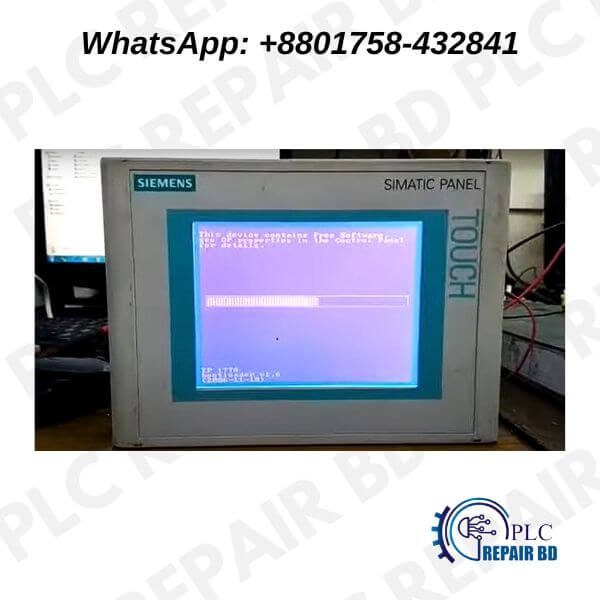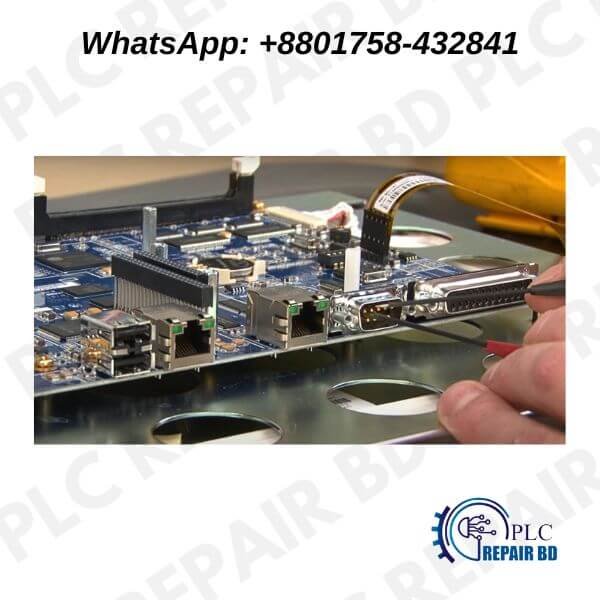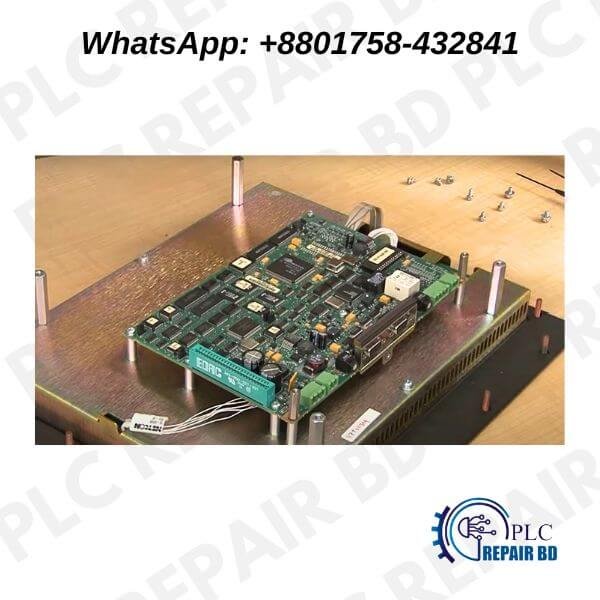
Ultimate Guide to Repairing how to repair Siemens HMI: Tips, Troubleshooting, and Solutions
1. Introduction
Welcome to the Ultimate Guide to Repairing Siemens HMI. In this comprehensive article, we will delve into the intricacies of Siemens Human Machine Interface (HMI), understanding its concept, and exploring its significance in various industrial applications. Whether you’re a seasoned technician or a novice user, this guide will equip you with the knowledge to troubleshoot and repair common issues that may arise with Siemens HMIs.
Understanding the Concept of Siemens Human Machine Interface (HMI)
Before we dive into the nitty-gritty of repairing Siemens HMIs, let’s start by understanding what an HMI is. An HMI, in the realm of industrial automation, serves as the bridge between humans and machines. It is an interface that allows operators and engineers to monitor, control, and interact with machines, processes, and systems in real-time.
Siemens HMIs are renowned for their advanced features and capabilities, making them a staple in various industries, from manufacturing to energy production. These powerful interfaces come in different forms, including touchscreens and buttons, and are pivotal for ensuring smooth and efficient operations.
Importance of Maintaining and Repairing HMIs
The importance of maintaining and repairing HMIs cannot be overstated. These devices are the linchpin of industrial processes, providing operators with critical data and control options. A malfunctioning HMI can result in costly downtime, decreased productivity, and potential safety hazards. Therefore, regular maintenance and prompt repair are essential to keep operations running smoothly.
Overview of the Article’s Content
In this comprehensive guide, we will address common issues that plague Siemens HMIs, both from a hardware and software perspective. We will then provide step-by-step troubleshooting procedures for these issues. For the more technically inclined, we will explore advanced repair techniques, including screen replacement and debugging software problems. Additionally, we’ll touch on preventive maintenance measures to keep your Siemens HMI in prime condition.
Let’s embark on this journey of HMI repair and maintenance, ensuring your Siemens HMI operates at its full potential.
2. Common Issues with Siemens HMI

Before we jump into troubleshooting and repair, let’s identify some common issues you might encounter with Siemens HMIs. Understanding these problems will help you diagnose and address them effectively.
Physical Hardware Issues
- Unresponsive Touch Screen
An unresponsive touch screen is a frustrating issue that can hinder productivity. It often occurs due to calibration problems, physical damage, or hardware malfunction.
- Cracked or Damaged Display
Physical damage to the display is a common issue. Cracked screens can render the HMI unusable and pose safety risks in industrial settings.
- Faulty Buttons or Keys
If buttons or keys on the HMI become unresponsive, it can impede the operator’s ability to control machinery and access critical functions.
- Loose Connections and Cable Problems
Loose connections or damaged cables can lead to intermittent issues or complete HMI failures. Identifying and rectifying these problems is crucial.
Software and Configuration Problems
- HMI Freezing or Hanging
HMI freezing or hanging can result from software glitches or resource constraints. It can disrupt operations and require swift resolution.
- Booting or Startup Issues
Issues during startup can prevent the HMI from initializing properly. These problems may stem from software errors, configuration issues, or hardware faults.
- Configuration Errors and Programming Faults
Misconfigured settings or programming errors can cause unexpected behavior in the HMI. Correcting these issues is essential for optimal functionality.
- Communication Failure with PLC or Other Devices
When the HMI fails to communicate with other devices, such as Programmable Logic Controllers (PLCs), it disrupts data exchange and control processes. Troubleshooting is crucial for reestablishing communication.
Now that we’ve identified these common issues, let’s move on to the troubleshooting phase to resolve them effectively.
3. Troubleshooting Siemens HMI

Troubleshooting is a critical step in identifying and resolving issues with Siemens HMIs. It involves a systematic approach to diagnose and rectify both hardware and software problems. In this section, we’ll provide you with the tools and knowledge to tackle these issues head-on.
Hardware Troubleshooting
- Checking Power Supply and Connections
Before diving into complex troubleshooting, start by ensuring that the HMI has a stable power supply and all connections are secure. Power fluctuations or loose connections can lead to various issues.
- Calibrating the Touch Screen
If your touch screen is unresponsive or inaccurate, recalibrating it may solve the problem. Siemens HMIs often have built-in calibration tools for this purpose.
- Replacing Damaged Components
In cases of physical damage to the HMI, such as a cracked display or damaged buttons, you may need to replace the affected components. We’ll cover this in detail in the Advanced Repair Techniques section.
- Proper Cleaning and Maintenance
Regular cleaning and maintenance can prevent many hardware issues. Learn the best practices for keeping your HMI clean and free from dust and contaminants.
Software Troubleshooting
- Performing System Restarts and Resets
A simple restart or reset can often resolve software-related issues. We’ll guide you through the steps for different Siemens HMI models.
- Updating HMI Firmware and Software
Outdated firmware or software can be a source of problems. We’ll explain how to safely update your Siemens HMI to the latest versions.
- Diagnosing and Solving Common Software Errors
Learn how to identify and address common software errors, such as runtime errors or configuration issues, that may plague your HMI.
- Restoring Factory Defaults
When all else fails, restoring your HMI to factory defaults can provide a fresh start. We’ll walk you through the process and precautions.
With these troubleshooting techniques, you’ll be well-equipped to handle most issues that arise with your Siemens HMI. But what if you need to take your repair skills to the next level? In the next section, we’ll explore advanced repair techniques.
4. Advanced Repair Techniques

Replacing Display and Touch Screen
- Identifying Compatible Replacement Parts
Before replacing the display or touch screen, it’s crucial to find compatible parts for your Siemens HMI model. We’ll guide you through this process.
- Step-by-Step Guide to Disassemble and Replace the Screen
Replacing the display or touch screen is a delicate operation. We’ll provide a step-by-step guide with detailed instructions to ensure a successful replacement.
- Calibration and Testing After Replacement
After replacing the screen, calibration and testing are essential to ensure proper functionality. We’ll show you how to calibrate the new screen and verify its performance.
Debugging Software Issues
- Using Siemens Diagnostic Software Tools
Siemens offers diagnostic software tools to aid in troubleshooting and debugging. We’ll introduce you to these tools and their functions.
- Analyzing Error Logs for Troubleshooting
Error logs are valuable resources for diagnosing software issues. We’ll teach you how to interpret these logs and pinpoint the root causes of problems.
- Reinstalling or Upgrading the HMI Operating System
In some cases, reinstalling or upgrading the HMI operating system may be necessary. We’ll provide a comprehensive guide to safely perform this operation.
Hardware Component Repair
- Repairing or Replacing Buttons and Keys
If your HMI’s buttons or keys are malfunctioning, you can often repair or replace them yourself. We’ll explain the process step by step.
- Fixing Loose Connections and Cables
Loose connections and damaged cables can lead to intermittent issues. Learn how to identify and repair these hardware problems.
- Soldering and Component-Level Repairs
For those with advanced technical skills, we’ll delve into soldering and component-level repairs. This section is for the more adventurous repair enthusiasts.
Data Recovery and Backup
- Data Recovery Methods for HMI Backups
Data loss can be catastrophic. We’ll cover data recovery methods to help you retrieve crucial information from backups.
- Performing Regular Backups for Future Protection
Prevention is key. We’ll emphasize the importance of regular backups and provide guidance on setting up automated backup routines.
- Restoring and Importing Data to a Repaired HMI
Once you’ve repaired or replaced your HMI, you’ll need to restore and import data to ensure seamless operations. We’ll guide you through this process.
5. Preventive Maintenance for Siemens HMI

Preventive maintenance is the cornerstone of ensuring the longevity and reliability of your Siemens HMI. By implementing the following measures, you can minimize the likelihood of future issues.
Cleaning and Dust Prevention
- Proper Cleaning Techniques for HMIs
Learn how to clean your HMI without causing damage, and discover the best tools and cleaning solutions for the job.
- Protection Against Dust and Environmental Contaminants
Preventing dust and contaminants from entering your HMI is crucial. We’ll provide tips on creating a clean and dust-free environment.
Regular Software Updates and Security
- Importance of Updating Firmware and Software
Stay up to date with the latest firmware and software releases to benefit from new features, bug fixes, and security enhancements.
- Implementing Security Measures and Patches
Protect your HMI from security threats by implementing security measures and promptly applying patches and updates.
Monitoring and Early Detection
- Using Monitoring Tools for HMI Health Check
Discover monitoring tools that can help you proactively assess the health of your Siemens HMI and detect issues before they become critical.
- Identifying Early Signs of Potential Issues
Learn to recognize early warning signs of potential problems with your HMI, allowing you to take action before they escalate.

Conclusion
In conclusion, the Siemens HMI is a vital component of industrial automation, and its proper maintenance and repair are essential for seamless operations. This Ultimate Guide has equipped you with a comprehensive toolkit for diagnosing and resolving common HMI issues, from hardware malfunctions to software glitches. Moreover, we’ve explored advanced repair techniques for the more adventurous repair enthusiasts.
Remember that preventive maintenance is the key to avoiding downtime and costly repairs. By implementing regular cleaning, software updates, and monitoring, you can extend the lifespan of your Siemens HMI and ensure its reliability.
We hope this guide empowers you to take control of your Siemens HMI’s maintenance and repair needs, ultimately contributing to the efficiency and success of your industrial processes.
Contact Information:
Phone: +8801758432841
Email: plcrepairbd@gmail.com
Address: House-29, Road-1, Nikunja-2, Khilkhet, Dhaka-1229.
Frequently Asked Questions (FAQs) : How to repair Siemens HMI?
Can I repair a cracked Siemens HMI display at home?
We address the feasibility of repairing a cracked display at home, considering factors like technical skill level and available tools.
Can I fix HMI communication issues without external assistance?
We provide guidance on troubleshooting and resolving communication issues with PLCs and other devices, whether you can do it independently or require expert help.
How often should I perform preventive maintenance on my Siemens HMI?
We discuss the ideal frequency for preventive maintenance based on your specific industrial environment and usage.
The visual elements, such as the well-chosen images and infographics, added a lot of value to the post. They not only broke up the text but also made the content more engaging and easy to digest.